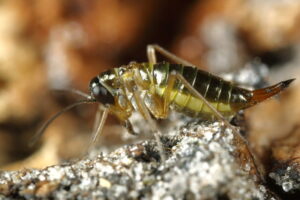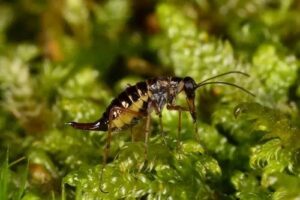Snow Scorpionfly (Boreidae)
Updated on
17/11/2022The snow scorpionfly is a family of about 30 insects that can survive cold temperatures. Their name comes from their ability to walk on snow.
Scientific Classification
- Class:Insecta
- Order:Mecoptera
- Family:Boreidae
Conservation Status
Genera and Species belonging to the Boreidae Family
- Boreus
- Boreus beybienkoi
- Boreus bomari
- Boreus borealis
- Mid-winter Boreus (Boreus brumalis)
- Boreus californicus
- Boreus chagzhigireji
- Boreus coloradensis
- Boreus elegans
- Boreus hyemalis
- Boreus insulanus
- Boreus intermedius
- Boreus jacutensis
- Boreus jezoensis
- Boreus kratochvili
- Boreus lokayi
- Boreus navasi
- Snow-born Boreus (Boreus nivoriundus)
- Boreus nix
- Boreus orientalis
- Boreus pilosus
- Boreus reductus
- Boreus semenovi
- Boreus sjostedti
- Boreus tardokijanensis
- Boreus unicolor
- Boreus vlasovi
- Boreus westwoodi
- Caurinus
- Caurinus dectes
- Caurinus tlagu
- Hesperoboreus
Description
These scorpionflies are tiny, with most species around 0.24 inches or less. Adults have a long rostrum emerging from their heads. The wings of the female are vestigial and non-functional.
Distribution: The Northern Hemisphere, including Canada, the British Isles, and part of the United States
Habitat: Deciduous forests
Do They Bite/Sting: No
Lifespan: Not Recorded
Predators: Birds
Behavior and Characteristics
Feeding
Both the larvae and adults feed on mosses.
Life Cycle
During the breeding season, the scorpionflies walk across the open snow while looking for a mate. Males hold on to the females over their backs with the help of their wings.
1. Egg Stage
After mating, the females lay egg masses and bury them in the soil.
2. Larval Stage
The larval stage lives close to the ground before eventually undergoing pupation.
3. Pupa Stage
Snow scorpionflies overwinter in this stage.
How does temperature affect these insects?
This scorpionfly’s body temperature depends on the absorption of short-wave and long-wave radiation. Since the upper layer of snow has low thermal conductance, the insect loses heat at a slow rate when it comes in contact with it. However, their heat tolerance is so low they cannot survive the heat generated by a human hand.
Source
janvanduinen.nl, livingwithinsects.wordpress.com






